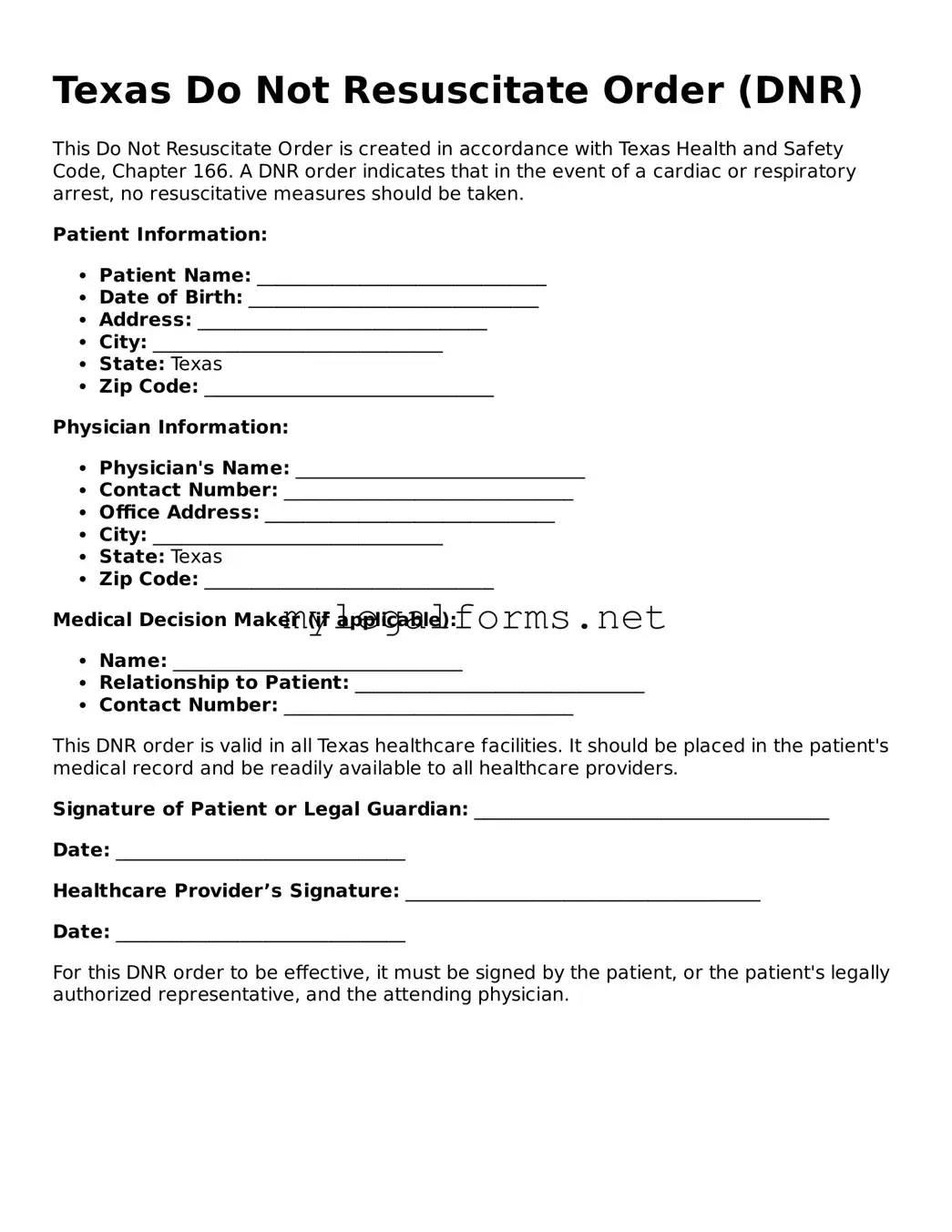Texas Do Not Resuscitate Order (DNR)
This Do Not Resuscitate Order is created in accordance with Texas Health and Safety Code, Chapter 166. A DNR order indicates that in the event of a cardiac or respiratory arrest, no resuscitative measures should be taken.
Patient Information:
- Patient Name: _______________________________
- Date of Birth: _______________________________
- Address: _______________________________
- City: _______________________________
- State: Texas
- Zip Code: _______________________________
Physician Information:
- Physician's Name: _______________________________
- Contact Number: _______________________________
- Office Address: _______________________________
- City: _______________________________
- State: Texas
- Zip Code: _______________________________
Medical Decision Maker (if applicable):
- Name: _______________________________
- Relationship to Patient: _______________________________
- Contact Number: _______________________________
This DNR order is valid in all Texas healthcare facilities. It should be placed in the patient's medical record and be readily available to all healthcare providers.
Signature of Patient or Legal Guardian: ______________________________________
Date: _______________________________
Healthcare Provider’s Signature: ______________________________________
Date: _______________________________
For this DNR order to be effective, it must be signed by the patient, or the patient's legally authorized representative, and the attending physician.
